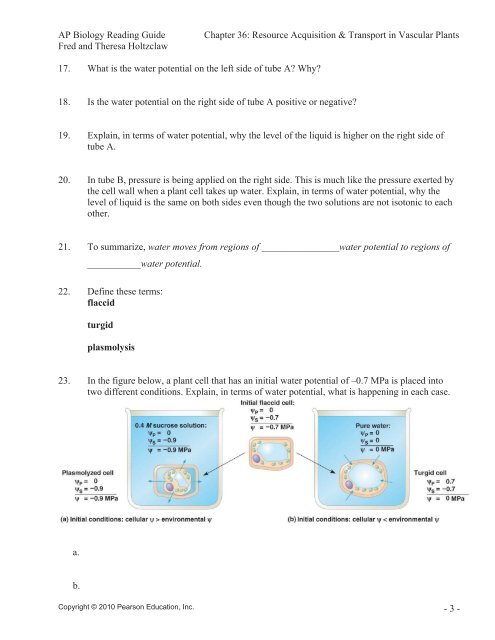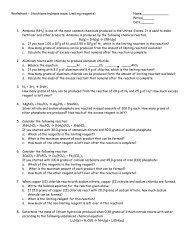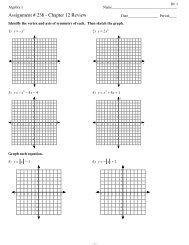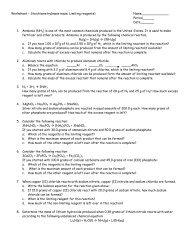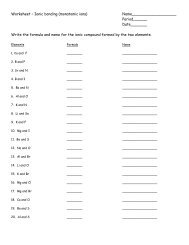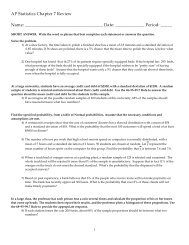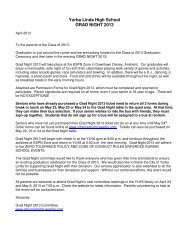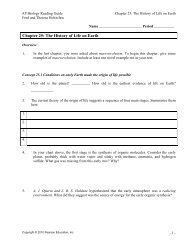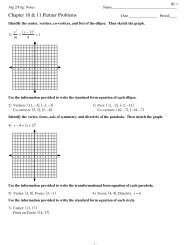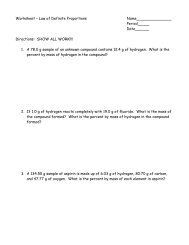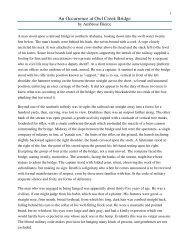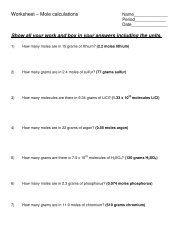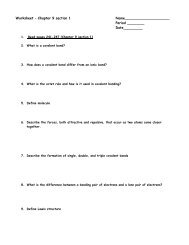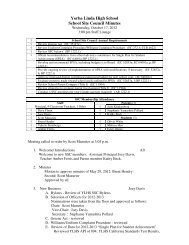Chapter 36: Resource Acquisition and Transport in Vascular Plants
Chapter 36: Resource Acquisition and Transport in Vascular Plants
Chapter 36: Resource Acquisition and Transport in Vascular Plants
- No tags were found...
Create successful ePaper yourself
Turn your PDF publications into a flip-book with our unique Google optimized e-Paper software.
AP Biology Read<strong>in</strong>g GuideFred <strong>and</strong> Theresa Holtzclaw<strong>Chapter</strong> <strong>36</strong>: <strong>Resource</strong> <strong>Acquisition</strong> & <strong>Transport</strong> <strong>in</strong> <strong>Vascular</strong> <strong>Plants</strong>17. What is the water potential on the left side of tube A? Why?18. Is the water potential on the right side of tube A positive or negative?19. Expla<strong>in</strong>, <strong>in</strong> terms of water potential, why the level of the liquid is higher on the right side oftube A.20. In tube B, pressure is be<strong>in</strong>g applied on the right side. This is much like the pressure exerted bythe cell wall when a plant cell takes up water. Expla<strong>in</strong>, <strong>in</strong> terms of water potential, why thelevel of liquid is the same on both sides even though the two solutions are not isotonic to eachother.21. To summarize, water moves from regions of ________________water potential to regions of___________water potential.22. Def<strong>in</strong>e these terms:flaccidturgidplasmolysis23. In the figure below, a plant cell that has an <strong>in</strong>itial water potential of –0.7 MPa is placed <strong>in</strong>totwo different conditions. Expla<strong>in</strong>, <strong>in</strong> terms of water potential, what is happen<strong>in</strong>g <strong>in</strong> each case.a.b.Copyright © 2010 Pearson Education, Inc. - 3 -


